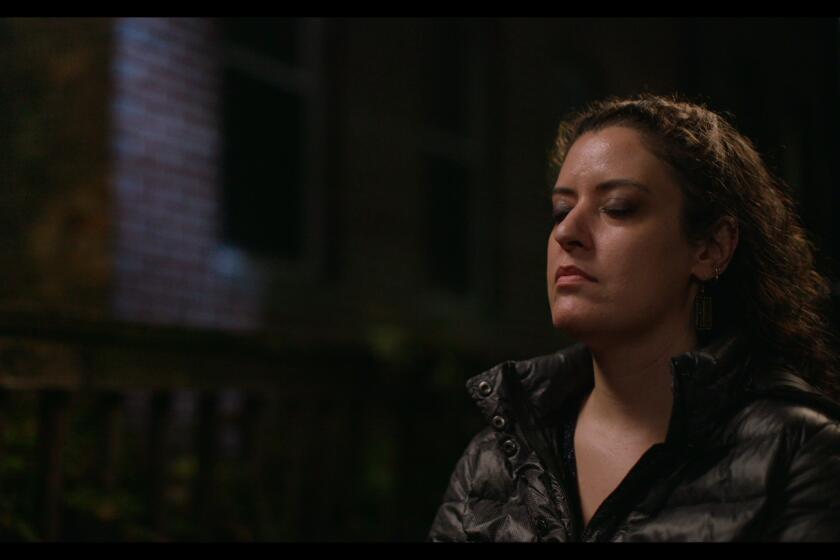Review: ‘Fifty Shades of Grey’ brings little pleasure
More years ago than I want to remember, I was wandering down a disreputable street near New York’s once-seedy Times Square when I spied a hand-lettered sign in front of a storefront theater. “At Last!” the poster read. “A Bondage Film With a Believable Story Line!”
I don’t remember what film was playing, but it certainly wasn’t “Fifty Shades of Grey.”
An unashamed and genially preposterous fairy tale, a kind of “Cinderella” with restraints, “50 Shades” is about as believable as “Jack and the Beanstalk,” albeit considerably more kinky in intent.
Though it has its charms, including pleasing and well-matched actors Dakota Johnson and Jamie Dornan as the star-crossed couple, these pleasures have little to do with the bondage-themed sexual encounters that enabled E.L. James’ badly written, unapologetically graphic trilogy of novels to sell a whopping 100 million copies in 52 languages worldwide.
In fact, the celebrated kinky elements in “Fifty Shades” are so used as a tease in this considerably less explicit film (rated no more than R for, among other things, “some unusual behavior”) that when the worst does take place — it’s a painful and distinctly unpleasant whipping, if you must know — it feels so out of place it seems to have come from a different film altogether.
As adapted from the novel by Kelly Marcel (“Saving Mr. Banks”), “Fifty Shades” fits snugly into a very specific Hollywood mold, the romance between the millionaire and the shop girl, with roots that go at least as far back as Mary Pickford’s last silent film, 1927’s “My Best Girl” and the 1930s radio serial “Our Gal Sunday.”
But as director Sam Taylor-Johnson (who dealt with the early years of John Lennon in “Nowhere Boy”) understands, given that traditional barriers to romance like differences in status, in race, in religion, have been all but obliterated, “Fifty Shades,” both book and novel, has to posit a new kind of difficulty that can keep loving couples apart.
So while Anastasia Steele (Johnson) yearns for the dreamy coupling of romantic equals, Christian Grey (Dornan), contemptuously proclaiming, “I don’t do the girlfriend thing,” insists on the dominant/submissive model of the BDSM world. Even the Cohens and the Kellys didn’t have it this hard.
Anastasia and Christian meet cute when she fills in for a sick journalist friend and agrees to drive to Seattle to interview him for the newspaper at Washington State University, where he will give the commencement speech. (Naturally she snags a parking space right in front of the building; it’s that kind of a movie.)
She’s a mouseburger of a college senior while at 27, a major whiz at telecommunications, he’s “the world’s most eligible billionaire bachelor.” We’ve seen just what that means in the film’s opening sequence, which lingers as lovingly over Christian’s extensive wardrobe — those suits, those shirts, those grey ties! — as it will later over his drop-dead apartment and snazzy private helicopter. The pornography of possessions is definitely alive and well in this production.
Against all odds, sparks fly between Anastasia and Christian during the interview to such an extent that the busiest man in the world tells his secretary to cancel his next meeting. Just imagine!
Though the audience, having heard about the book, presumably knows all about Christian’s sexual proclivities, virginal Anastasia hasn’t a clue, even when he all but gives it away with lines like, “I enjoy very physical pursuits” and “I exercise control in all things, Miss Steele.”
Eventually, as these two can’t leave each other alone, Christian tells Anastasia about his “playroom,” an immaculate space filled with restraints, whips and assorted bondage paraphernalia so tastefully arranged you expect to see it in a future issue of Architectural Digest.
Anastasia, being a sensible young person, is less than impressed with what she calls “the red room of pain.” But Christian, with a dark secret in his past, is nothing if not determined to make her part of his world, and as they go back and forth about the submissive contract he wants her to sign, discussions of sexual situations that can’t be mentioned in a family newspaper tease us with a frisson of danger.
What we actually see, however, though involving considerable female nudity in the 1960s soft core mold, is mostly but not entirely more tame than the talk, though Christian does exhibit a facility with elaborate knots that would impress a Boy Scout.
“Fifty Shades” encourages us to buy into this credulity-straining scenario because the actors go well together (casting director Francine Maisler did the heavy lifting), Dornan’s steely resolve facing off nicely against Johnson’s engaging feistyness as each tries to make this cross-cultural relationship work on his or her own terms.
But these pleasantries do not adequately prepare us for the inevitable moments when “Fifty Shades” is forced to go over to the dark side, when Christian’s actions come to feel abusive and not consensual and the delicate balancing act this film has been engaged in comes crashing down. It was not exactly fun while it lasted, but it certainly was better than where it ended up.
--------------
“Fifty Shades of Grey”
MPAA rating: R, for strong sexual content, including dialogue, some unusual behavior and graphic nudity and for language.
Running time: 2 hours, 5 minutes.
Playing: In general release
More to Read
Only good movies
Get the Indie Focus newsletter, Mark Olsen's weekly guide to the world of cinema.
You may occasionally receive promotional content from the Los Angeles Times.











